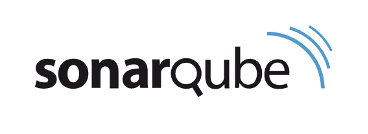What Are SAST Tools?
SAST (Static Application Security Testing) tools are specialized software that is designed to automatically analyze the source code of an application and identify potential security vulnerabilities. These tools use static analysis techniques to examine the source code, looking for patterns and anomalies that could indicate a vulnerability.
For example, a SAST tool might look for hard-coded sensitive data, unvalidated input, or insecure coding practices that could be exploited by attackers. SAST tools can provide detailed information about the specific lines of code where vulnerabilities are located, so that developers can fix the problems and improve the security of the application. SAST tools are typically used early in the development process, before the application is deployed.
Why Is JavaScript Security Testing Important?
JavaScript security testing is important because JavaScript-based applications can be vulnerable to security threats. JavaScript is a widely-used language for building web-based applications, and many of these applications handle sensitive data, such as personal information, financial transactions, or proprietary business information.
If a JavaScript-based application contains security vulnerabilities, it can be exploited by attackers, who may be able to gain unauthorized access to sensitive data, disrupt the application's operation, or cause other negative consequences. By performing JavaScript security testing, organizations can identify and mitigate potential security vulnerabilities, helping to protect their applications, data, and users from security breaches.
JavaScript security testing is an important part of the overall process of application security testing, and it is typically performed in conjunction with other types of security testing, such as SAST, dynamic application security testing (DAST), and interactive application security testing (IAST).
Best SAST Tools for JavaScript Applications
Veracode

Veracode is a cloud-based static application security testing (SAST) platform that uses static and dynamic analysis to scan applications for vulnerabilities. It is designed to be easy to use and integrate into the software development process.
Some key features of Veracode include:
- Code analysis: Veracode uses automated tools to scan source code and related artifacts for vulnerabilities, such as SQL injection vulnerabilities and cross-site scripting (XSS) vulnerabilities.
- Vulnerability management: Veracode provides a centralized dashboard for managing and tracking vulnerabilities, including the ability to prioritize and assign vulnerabilities to team members for remediation.
- Integration with development tools: Veracode integrates with popular development tools and platforms, such as Jenkins, GitHub, and Azure DevOps, making it easy to incorporate into the development process.
- Customizable reports: Veracode provides customizable reports that can be tailored to the specific needs of an organization, including information on the types of vulnerabilities detected, the location of vulnerabilities within the code, and the severity of the vulnerabilities.
Fortify

Fortify is a static code analysis tool that helps developers identify and fix vulnerabilities in their source code. It is often used in software development organizations to improve the security of their products and to meet compliance requirements.
Some of the features provided by Fortify include:
- Automatic detection of vulnerabilities: Fortify uses advanced algorithms and rules to identify potential vulnerabilities in source code, such as SQL injection attacks, cross-site scripting (XSS), and insecure cryptography practices.
- Integration with popular development tools: Fortify can be integrated with various development tools, including IDEs (e.g., Eclipse, Visual Studio), version control systems (e.g., Git), and build systems (e.g., Maven, Gradle).
- Reporting and visualization: Fortify provides detailed reports that outline the vulnerabilities found in the source code, including their location and severity. It also provides visualization tools that help developers understand the impact and risk of each vulnerability.
- Remediation guidance: Fortify provides guidance on how to fix the vulnerabilities it detects, including recommended code changes and best practices.
- Customization and configuration: Fortify allows users to customize the rules and algorithms used to detect vulnerabilities, and to configure the tool to meet the specific needs of their organization.
Checkmarx

Checkmarx is a software security company that provides a range of products and services to help organizations identify and mitigate security vulnerabilities in their software applications.
Some of the key features of Checkmarx products include:
- Static Code Analysis: Checkmarx's static code analysis tool scans source code and identifies potential security vulnerabilities, such as injection attacks, cross-site scripting, and insecure use of cryptographic functions.
- Dynamic Application Security Testing (DAST): Checkmarx's DAST tool tests web applications for security vulnerabilities by simulating attacks against the application.
- Software Composition Analysis (SCA): Checkmarx's SCA tool analyzes the third-party libraries and frameworks used in an application and identifies any known vulnerabilities.
- Mobile Application Security Testing: Checkmarx offers a range of tools and services for testing the security of mobile applications, including static analysis, dynamic testing, and manual testing.
- Application Security Training: Checkmarx offers training courses and certification programs to help organizations improve their software security practices and knowledge.
SonarQube

SonarQube is an open-source platform for managing code quality. It is designed to help developers and organizations improve the quality of their code by identifying issues such as bugs, vulnerabilities, and code smells.
Some of the key features of SonarQube include:
- Static code analysis: SonarQube can analyze source code and identify issues such as syntax errors, code smells, and security vulnerabilities.
- Code coverage: SonarQube can measure the percentage of code that is covered by tests and identify areas of the code that are not well tested.
- Code duplication: SonarQube can identify duplicate code, which can be a sign of poor code quality and a maintenance issue.
- Code complexity: SonarQube can measure the complexity of code and identify areas that may be difficult to understand or maintain.
- Integration with popular development tools: SonarQube can be integrated with popular development tools such as Eclipse, IntelliJ, and Visual Studio, making it easy for developers to use within their existing workflow.
- Custom rules: SonarQube allows developers to define custom rules to enforce specific coding standards and best practices.
- Reporting and dashboards: SonarQube provides a range of reports and dashboards to help developers and organizations track code quality over time and identify areas for improvement.
Key Considerations When Choosing a SAST Tool
Accuracy
False positives are one of the main factors that can impact the accuracy of a SAST tool. A false positive occurs when the tool identifies a potential vulnerability in the source code, but the identified vulnerability is not actually present. This can be frustrating for developers, who may spend time and effort investigating and fixing a problem that does not exist. A tool with a high rate of false positives will have a lower level of accuracy, as it may miss actual vulnerabilities or generate a large number of false alarms.
Vulnerability databases and threat intelligence feeds can also impact the accuracy of a SAST tool. Many SAST tools use databases of known vulnerabilities and threat intelligence feeds to identify potential security issues in the source code. The accuracy of the tool will depend on the quality and completeness of these databases and feeds. A tool that uses outdated or incomplete information may miss vulnerabilities or generate false positives, reducing its overall accuracy.
Language Coverage and Versatility
Language coverage refers to the number and types of programming languages that a SAST tool can analyze. A tool with broad language coverage is able to analyze a wide range of languages, including common ones like Java, C++, and Python, as well as less commonly used languages. This allows the tool to be used on a wider variety of projects and codebases, increasing its effectiveness.
Versatility determines a SAST tool's ability to be integrated with different development environments and processes. A versatile tool can be easily integrated into a variety of development workflows, allowing developers to use it without disrupting their existing processes. This can make the tool more effective, as it can be used more easily and consistently by the development team.
API Structure and Ease of Integration
A well-designed API structure allows the tool to be easily integrated with other tools and systems, improving its overall effectiveness. For example, a SAST tool with a clear and well-documented API can be easily integrated with a continuous integration/continuous deployment (CI/CD) pipeline, allowing it to be used automatically and consistently as part of the development process.
Speed of Scan
A slow-scanning SAST tool can be frustrating for development teams, as it may take a long time to analyze the code and identify vulnerabilities. This can slow down the development process and disrupt the team's workflow, which can be frustrating. A slow-scanning tool may also miss vulnerabilities that are introduced or fixed during the scan, reducing its effectiveness.
On the other hand, a fast-scanning SAST tool can help teams to quickly identify and fix security vulnerabilities in their code, improving the overall security of their software. This can be particularly useful for teams working on large codebases or on tight deadlines, as it allows them to find and fix vulnerabilities quickly and efficiently.
Conclusion
In conclusion, there are several SAST tools available that are specifically designed for JavaScript applications. These tools can help identify and fix potential security vulnerabilities in code, ensuring that applications are not at risk of being exploited by attackers.
Using these tools helps protect sensitive data and reduce the risk of harm to users and systems. Ultimately, the best SAST tool for a JavaScript application will depend on the specific needs of the organization and the features offered by each tool.








